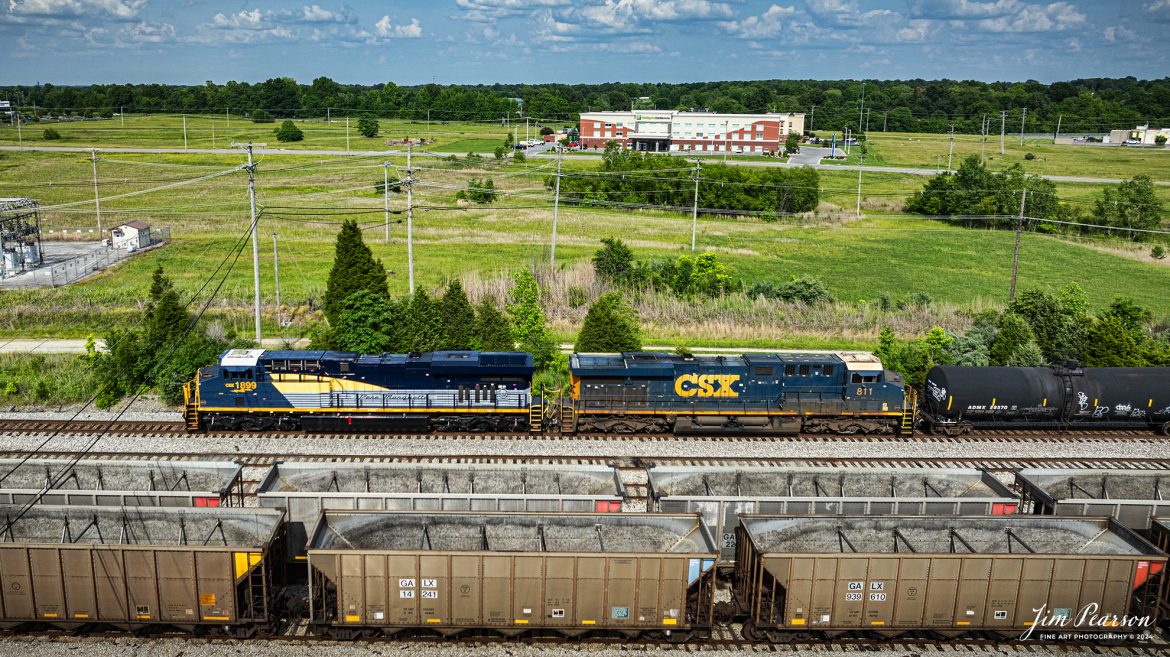CSX M502 through the south end of Atkinson Yard at Madisonville, Ky with CSX Pere Marquette Heritage Unit, 1899, leading the way on the CSX Henderson Subdivision, on May 20th, 2024.
According to a CSX Press Release: May 1, 2024 – CSX has introduced the latest addition in its heritage locomotive series, paying homage to the rich history of the Pere Marquette Railroad. This new unit showcases the Pere Marquette’s legacy, dating back to its inception on November 1, 1899.
The Pere Marquette Railroad, operating in the Great Lakes region of the United States and parts of southern Ontario, Canada, derived its name from Jacques Marquette, a notable French Jesuit missionary credited with founding Michigan’s first European settlement in Sault Ste Marie. After years of operation, the company merged with the Chesapeake and Ohio Railway (C&O) on June 6, 1947, eventually becoming part of the renowned CSX network.
The design of the Pere Marquette heritage locomotive was meticulously crafted by employees at the CSX Waycross Locomotive Shop. According to CSX Carman Painter Eric Lee, “We had to measure each stripe precisely and position the words just right to ensure it captured the look of the original design. It took us about four days just to lay out the stripes before we could begin painting.”
A fascinating tidbit related to the history of Pere Marquette is its cameo in the 2004 film “The Polar Express.” The steam locomotive Pere Marquette 1225 served as the inspiration for the train depicted in the movie, with audio recordings of the actual locomotive in operation featured in the film. Interestingly, the locomotive had been donated to Michigan State University and was exhibited near the university’s football stadium. The author of “The Polar Express” book drew inspiration from seeing this locomotive on display during childhood, solidifying its place in popular culture.
CSX’s dedication to honoring the history and significance of the Pere Marquette Railroad through this new locomotive underscores the company’s commitment to preserving and celebrating the heritage of American railroads. Keep an eye out as this remarkable piece of history moves across the CSX network, bridging the past with the present.
Tech Info: DJI Mavic 3 Classic Drone, RAW, 22mm, f/2.8, 1/1600, ISO 100.


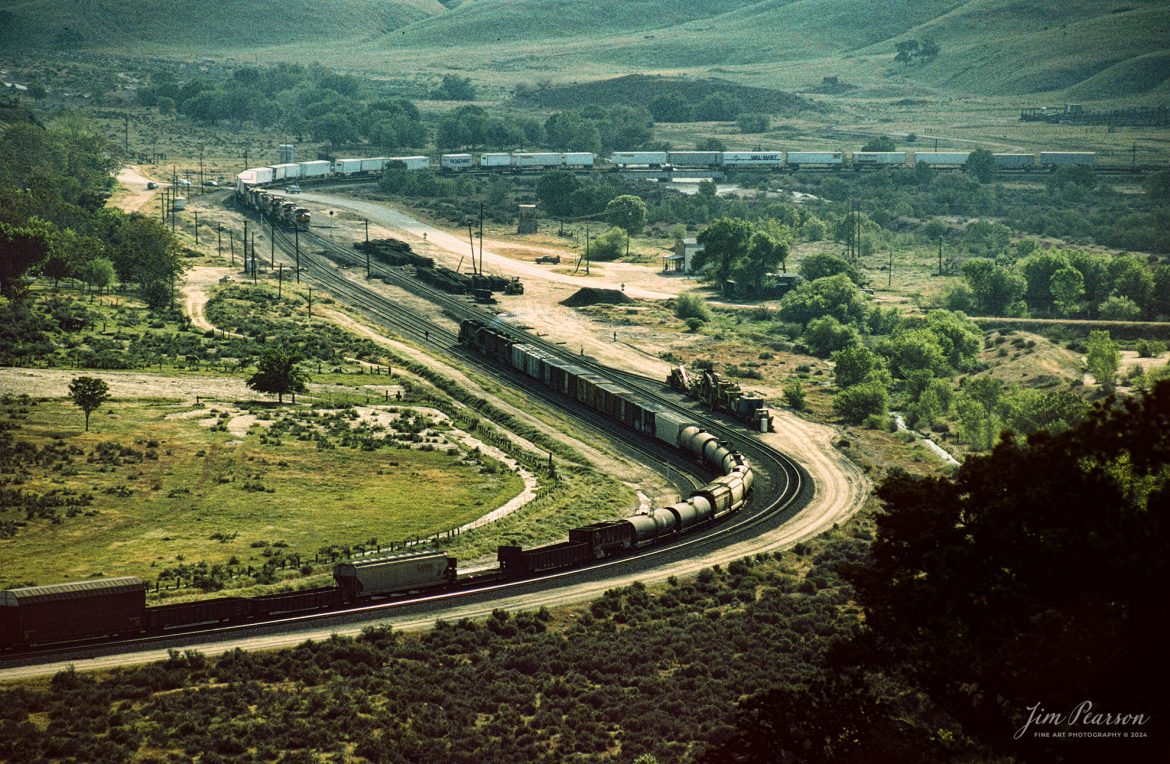

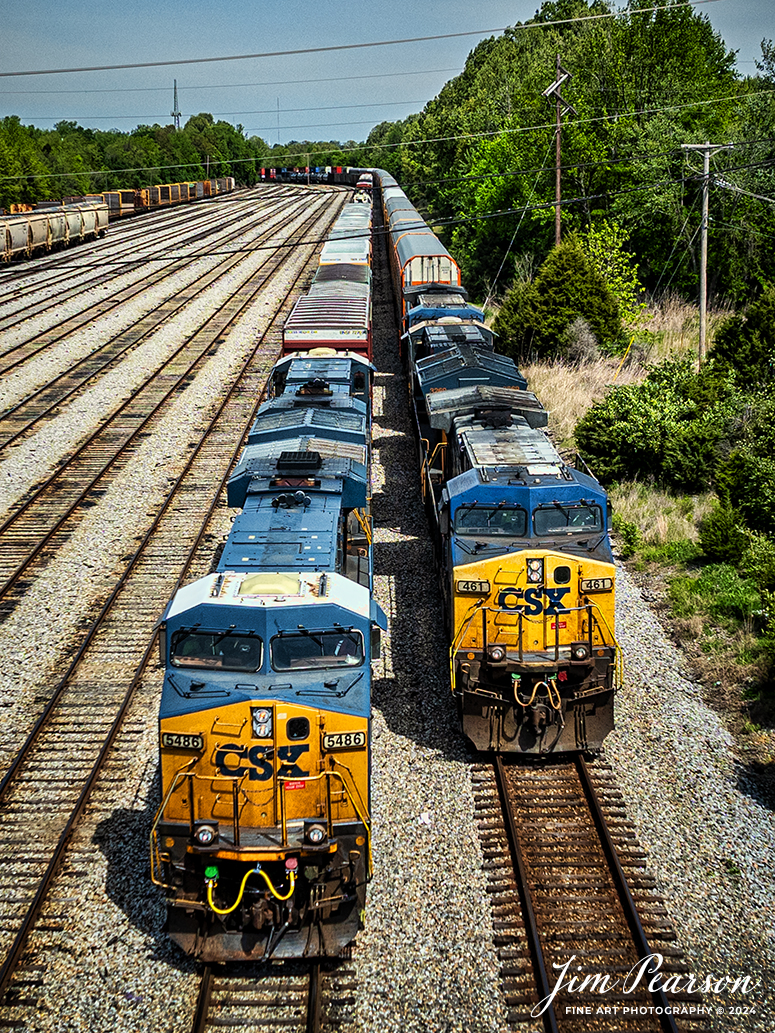
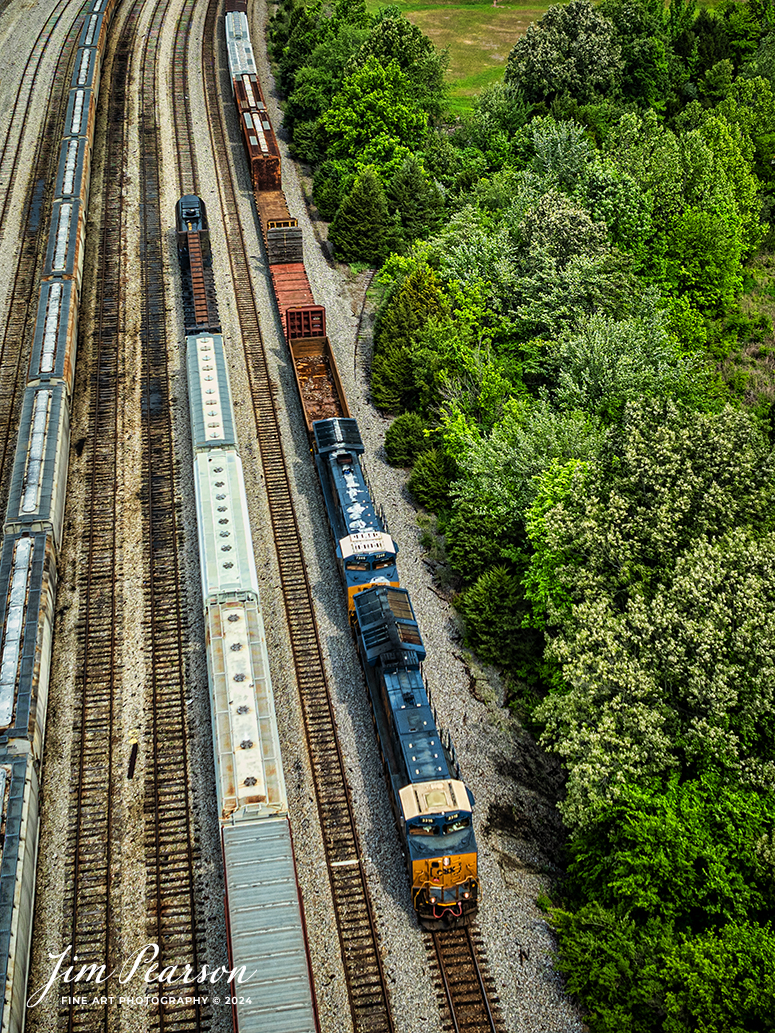
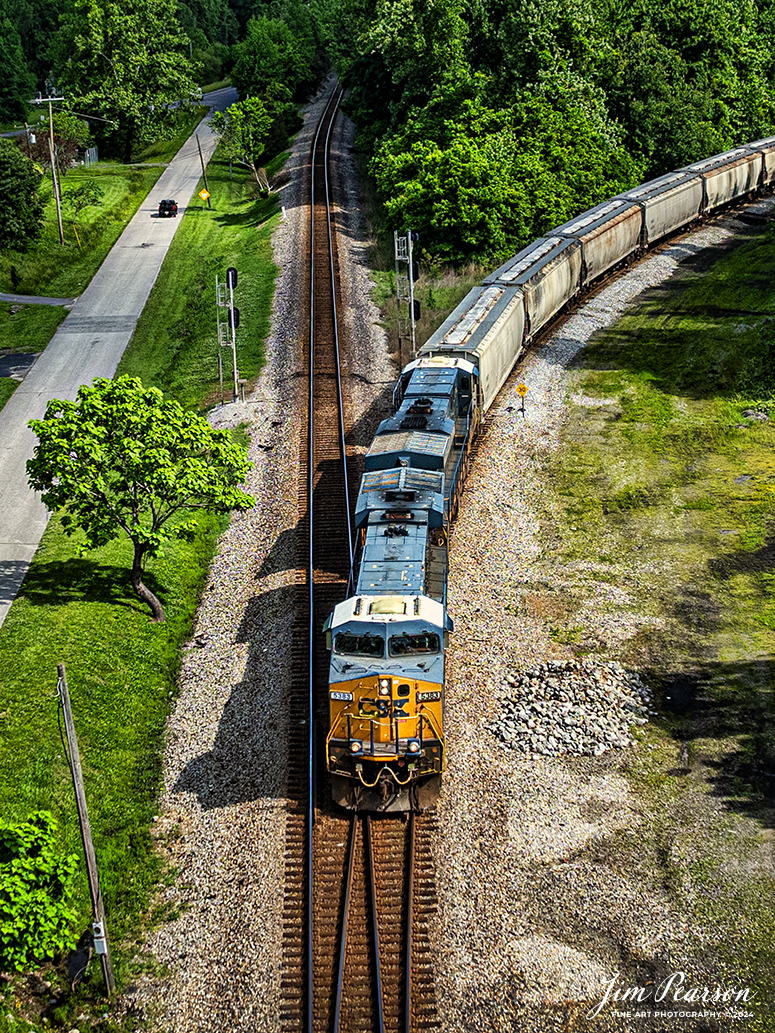









![A Southern Pacific tank train makes it's way through the Cajon Pass in Sothern California in March of 1995 with 5 units pulling hard.
I spent a lot of years railfanning the pass between 1981 and 1995! It's a great place to catch trains and I've been back several times over the years since then.
In fact I'm headed back again this coming September for a week or so to see how much it has changed since I was last there several years ago. In fact, it was before I had a drone, so I'm really looking forward to railfanning from the air this next trip!
According to Wikipedia: Cajon Pass is a mountain pass between the San Bernardino Mountains to the east and the San Gabriel Mountains to the west in Southern California. Created by the movements of the San Andreas Fault, it has an elevation of 3,777 ft (1,151 m).[1] Located in the Mojave Desert, the pass is an important link from the Greater San Bernardino Area to the Victor Valley, and northeast to Las Vegas. The Cajon Pass area is on the Pacific Crest Trail.
Cajon Pass is at the head of Horsethief Canyon, traversed by California State Route 138 and railroad tracks owned by BNSF Railway and Union Pacific Railroad. Improvements in 1972 reduced the railroad's maximum elevation from about 3,829 to 3,777 feet (1,167 to 1,151 m) while reducing curvature. Interstate 15 does not traverse Cajon Pass, but rather the nearby Cajon Summit. The entire area, Cajon Pass and Cajon Summit, is often referred to as Cajon Pass, but a distinction is made between Cajon Pass and Cajon Summit.
Nikon F3 Camera, Nikon 70-300mm lens, f/stop and shutter speed not recorded](http://www.jimpearsonphotography.com/wp-content/uploads/2024/06/WEB-03.1995-SP-Train-at-Morman-Rocks-1170x675.jpg)

